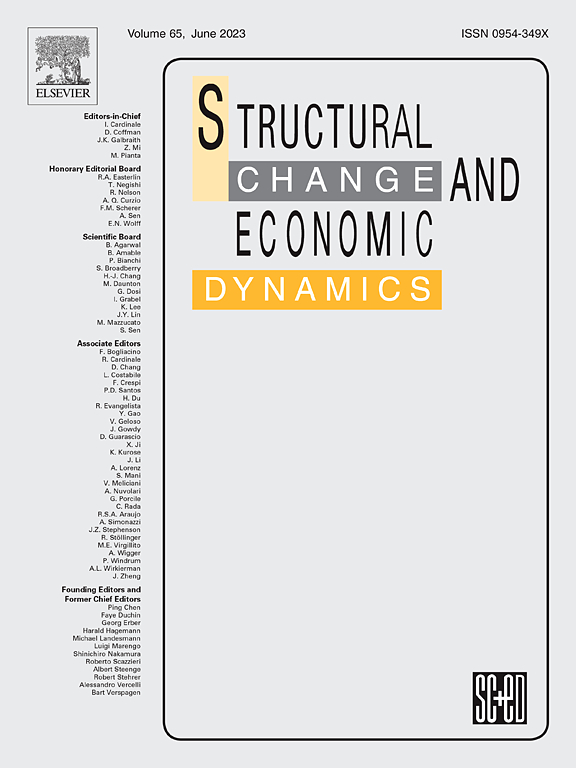全球供应链视角下贸易体现的跨国劳动力转移动态变化与中国参与
IF 5.5
2区 经济学
Q1 ECONOMICS
引用次数: 0
摘要
本研究建立了多区域投入产出模型,分析了2004年、2007年、2011年、2014年和2017年贸易包含劳动的国际转移模式。考虑到技能水平,劳动被分为熟练劳动和非熟练劳动。本文还从全球供应链的角度探讨了中国在国际分工中的作用趋势。结果表明,中国是贸易隐含劳动力的主要出口国。美国和欧盟不仅是主要的进口国,而且还出口了大量有效的熟练劳动力。2004年至2017年,中国有效技术劳动力外流比例快速上升。因此,美国、欧盟和日本的出口下降。第一产业和第二产业是早期中国贸易劳动力外流的重点。2011年以后,受“供给侧结构性改革”等政策影响,成为第三产业。本文章由计算机程序翻译,如有差异,请以英文原文为准。
Dynamic change of transnational labour transfer embodied in trade and China’s participation from the perspective of global supply chains
This study developed a multi-regional input-output model to analyse the international transfer patterns of trade embodied labour for the years 2004, 2007, 2011, 2014 and 2017. Considering the skill level, labour was divided into skilled and unskilled labour. The trends of China’s role in international division of labour were also explored from the perspective of global supply chains. The results indicate that China was the primary exporter of trade embodied labour. The USA and EU were not only the main importer but also exported significant effective skilled labour. From 2004 to 2017, the proportion of China’s outflow of effective skilled labour increased rapidly. Consequently, those of the USA, EU and Japan declined. The primary and secondary industries were the focus of China’s trade embodied labour outflows in the early stages. After 2011, influenced by policies such as “supply-side structural reform”, it became the tertiary industries.
求助全文
通过发布文献求助,成功后即可免费获取论文全文。
去求助
来源期刊

Structural Change and Economic Dynamics
ECONOMICS-
CiteScore
9.60
自引率
4.90%
发文量
159
期刊介绍:
Structural Change and Economic Dynamics publishes articles about theoretical, applied and methodological aspects of structural change in economic systems. The journal publishes work analysing dynamics and structural breaks in economic, technological, behavioural and institutional patterns.
 求助内容:
求助内容: 应助结果提醒方式:
应助结果提醒方式:


